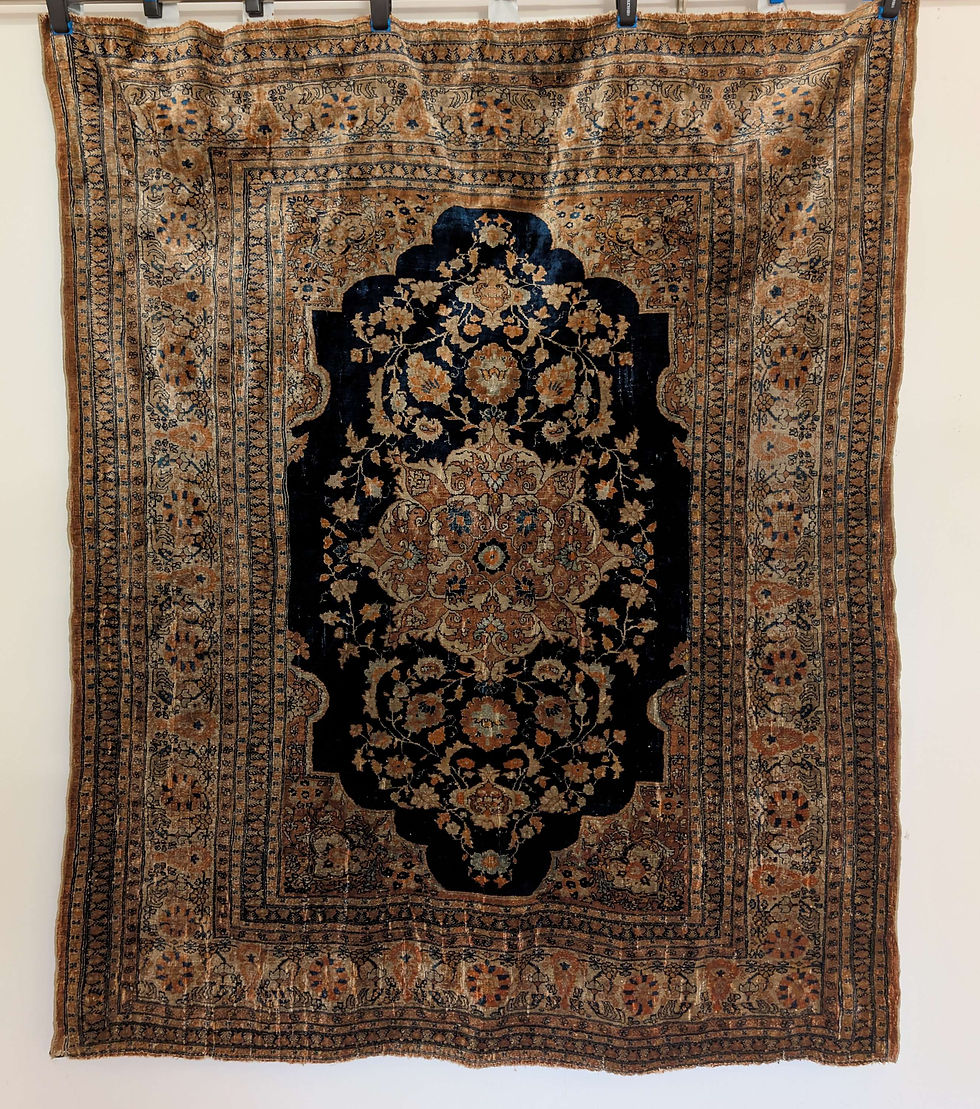Masterpiece Antique Silk Tabriz (Haji Jalili)
Silk Tabriz carpets from the 1800s are considered exceptional and valuable for a variety of reasons. They are highly prized by collectors, historians, and interior designers for their intricate artistry, fine craftsmanship, and historical significance. Here's why these carpets are so special:
1. Historical and Cultural Significance
Tabriz Heritage: Tabriz, located in northwestern Iran, has been a major center of Persian carpet weaving for centuries. The city's carpet-making tradition dates back to the Safavid dynasty (1501–1736), which brought Persian carpets to international acclaim.
Master Weavers: During the 19th century, Tabriz was home to master weavers who revived and perfected traditional designs, often combining them with innovative patterns inspired by Persian miniature paintings.
2. Material Quality
Pure Silk: These carpets were crafted entirely from silk, a luxurious material that gives them a shimmering appearance and soft texture. Silk also allows for a finer weave, enabling weavers to create highly detailed designs.
Natural Dyes: The vibrant colors of 1800s Tabriz carpets were derived from natural dyes made from plants, roots, and minerals. These dyes not only produced rich, enduring hues but also aged beautifully over time.
3. Exceptional Craftsmanship
High Knot Density: Silk Tabriz carpets are renowned for their incredibly high knot density (often exceeding 500 knots per square inch). This fine weaving allows for intricate and detailed patterns that resemble works of art.
Precision: The weaving process required extraordinary skill and precision, often taking years to complete a single carpet.
4. Artistic Designs
Complex Motifs: Tabriz carpets from the 1800s often feature intricate floral patterns, arabesques, hunting scenes, and medallions, reflecting the weavers' artistic ingenuity.
Cultural Themes: Many designs incorporate elements from Persian mythology, poetry, and history, making each carpet a narrative piece as well as a decorative item.
5. Durability and Timelessness
Lasting Quality: The combination of fine silk and expert weaving ensures that these carpets remain in excellent condition for centuries if properly cared for.
Antique Value: Their longevity adds to their appeal as antiques, and the rarity of surviving examples from the 1800s makes them even more valuable.
6. Symbol of Status and Luxury
In the 19th century, silk Tabriz carpets were luxury items often commissioned by wealthy patrons, royalty, or nobility. They were considered symbols of wealth and cultural sophistication.
Today, they continue to hold this status, with antique Tabriz silk carpets fetching high prices at auctions.
7. Rarity
Few authentic silk Tabriz carpets from the 1800s have survived due to their delicate nature. This scarcity further enhances their value and desirability among collectors.
8. Global Influence
These carpets played a significant role in introducing Persian artistry to the Western world during the 19th century. They influenced global tastes in textile design and were often showcased at international exhibitions.
Conclusion
Silk Tabriz carpets from the 1800s represent a pinnacle of Persian carpet-making, combining luxury, artistry, and historical significance. Their intricate designs, exceptional craftsmanship, and cultural heritage make them more than just functional items—they are timeless works of art that encapsulate the rich traditions of Persian culture.


